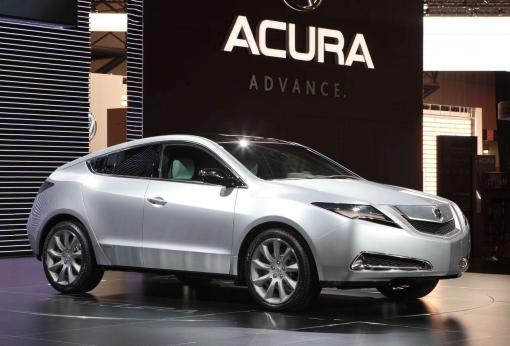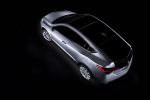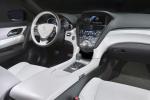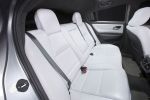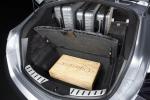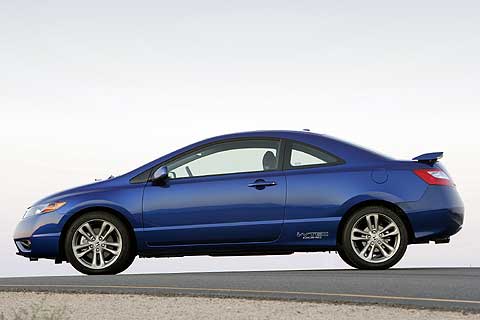
Andrew Neil was affable, professional and responsive throughout the 13 years I was motoring correspondent of
The Sunday Times. We didn’t talk a lot but when I called, he called back. He didn’t much care for my predecessor (I thought her competent enough) judging by memos in a desk I inherited. Irascible? Not really. Approachable? Invariably.
I worked for lots of editors.
The Guardian, The Times, Telegraph, News of the World, Motor, Autocar and most motoring magazines. Peter Jackson, editor of
Drive, the AA magazine, the
Sunday Times Magazine and
Road and Car paid well and approved expenses an MP might envy. Editors were polite, reasonable people who encouraged contributors. If they didn’t like what you were selling they would say so. Which was fine; you could always sell it elsewhere.
Michael Bowler was an old colleague at
The Motor. Founder editor of
Classic Car he edited
The Automobile until Jonathan Rishton replaced him. I wrote for The Automobile from time to time. Michael was professional. He liked features that were accurate, well written and appropriate. I liked
The Automobile. I have kept every issue over its entire 28 years. That will make 336 magazines to the end of the current volume.
I won’t be renewing my subscription.
The magazine’s not bad; it has lost Bowler’s deft touch but Rishton is so rude. Ignores messages. Fails to call back when he says he will. Never replies to emails, even to say No. Editors are not what they were. Andrew Neil was a pleasure to work with.
The Vauxhall Motorcycle. Part 1
In 1920 Vauxhall was in a quandry. It had had a good war, making 25HP staff cars for British officers. One took King George V to Vimy Ridge, another General Allenby on his entry to Jerusalem. A Vauxhall was first across the Rhine following the Armistice, but post-war the outlook was bleak. Laurence Evelyn Pomeroy (1883-1941), inspired designer and architect of its Edwardian prosperity had intimated he was leaving.
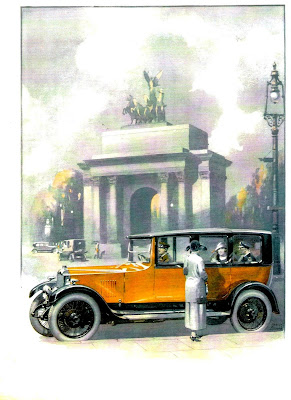 1922-1927 OD
1922-1927 ODPomeroy had been responsible for the glorious 30-98, spent much of the war experimenting with camshafts, and was off to America to work in aluminium. His successor, Clarence King, did not inspire confidence. King had worked with the Adams Manufacturing Company and the Société Lorraine, but was something of a mystic and trying to earn a living in France as a painter.
The Vauxhall directors wanted something new. Losing the 1914 TT to Peugeot rankled, so in 1922 they commissioned two projects from the design consultancy led by 37 year old Harry Ricardo. He was to restore Vauxhall prestige in motor racing with a 3 litre racing car for 1923. “It was”, said Ricardo, “one of my most fascinating jobs; a racing engine for which I was given a perfectly free hand.” Provided with a budget the generosity of which astonished WO Bentley, he undertook the design himself.
Vauxhall also wanted to sell a smart sporting motorcycle to returning servicemen, for which Ricardo engaged Major Frank Bernard Halford (1894-1955).
Ricardo’s racing Vauxhalls were well engineered but only moderately successful. They competed in the Isle of Man Tourist Trophy, where Bentley regarded them as at least unsporting, or worse, imposters. They seemed to him out and out racing cars, which was not sporting. He was further annoyed when the sole Vauxhall survivor took third place, not only splitting the winning Bentleys, but also beating WO, who dropped to fourth after losing 6sec through missing a pit signal.
It was Vauxhall’s last hurrah. The cars were good but times were hard and motor racing was expensive. The team was disbanded and the cars sold. Raymond Mays bought one which in 1928, with a supercharger as the Vauxhall Villiers, paved the way for Mays and Peter Berthon to create ERA.
FB Halford was a former Royal Flying Corps pilot. He had ridden a 4-valve Triumph with a Ricardo engine to 13th place in the 1922 Senior TT, so he knew what he was doing with a classy motorcycle. His inspiration came from aircraft engines, which usually flew inverted, crankshaft uppermost driving the propeller. Halford’s motorcycle in-line 4-cylinder had its crankshaft underneath, like a car’s. (to be continued)

 Unlike the A2 model which was originally designed as a three door hatchback vehicle which later all and became more of a luxury family car, the Audi A4 which is also manufactured by the same German automotive maker "Audi" is a luxury executive car which can also be classified as a compact vehicle. According to the enumeration you might think that this is the successor to the A2 but, it actually is a successor of the Audi 80.
Unlike the A2 model which was originally designed as a three door hatchback vehicle which later all and became more of a luxury family car, the Audi A4 which is also manufactured by the same German automotive maker "Audi" is a luxury executive car which can also be classified as a compact vehicle. According to the enumeration you might think that this is the successor to the A2 but, it actually is a successor of the Audi 80. production of this vehicle started in 1994 and ever since its introduction to the market there have been for generations (or versions) of this model.
production of this vehicle started in 1994 and ever since its introduction to the market there have been for generations (or versions) of this model. Note that while Audi often shares parts with its parent company Volkswagen, this Audi A4 engine is not related to VW's VR6, even though this engine was offered in similar sizes and power outputs. In more recent years both the 90 degree motor and the VR6 have been place in the Audi A4's engine bay. While Audi A4 engine is smoother and more powerful, it is heavier than the single head VW unit.
Note that while Audi often shares parts with its parent company Volkswagen, this Audi A4 engine is not related to VW's VR6, even though this engine was offered in similar sizes and power outputs. In more recent years both the 90 degree motor and the VR6 have been place in the Audi A4's engine bay. While Audi A4 engine is smoother and more powerful, it is heavier than the single head VW unit.












